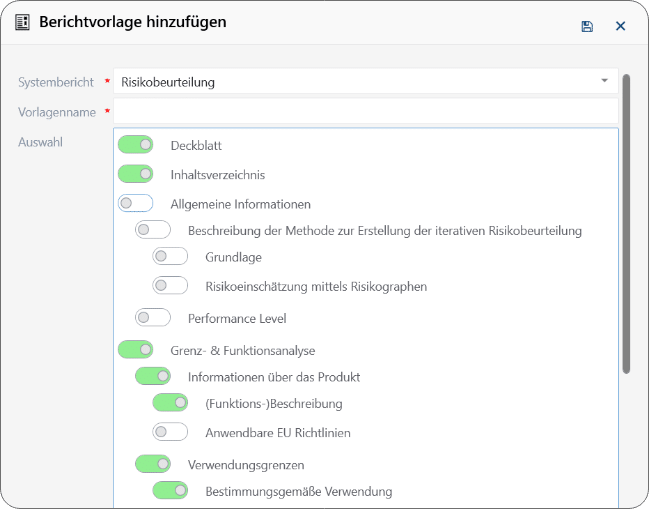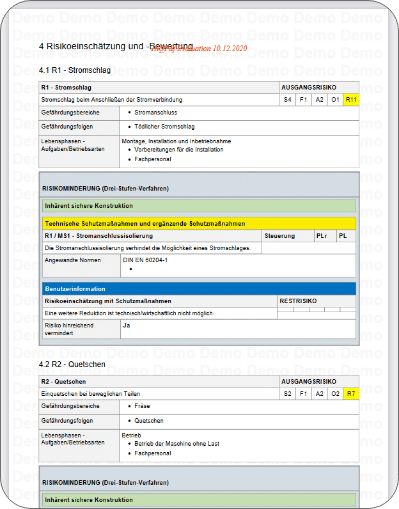Secutify Solo
Risk Assessment Software for CE Marking
Secutify supports you with risk assessments for CE marking according to the Machinery Directive. Using your own templates, you can create your documentation even easier and faster.
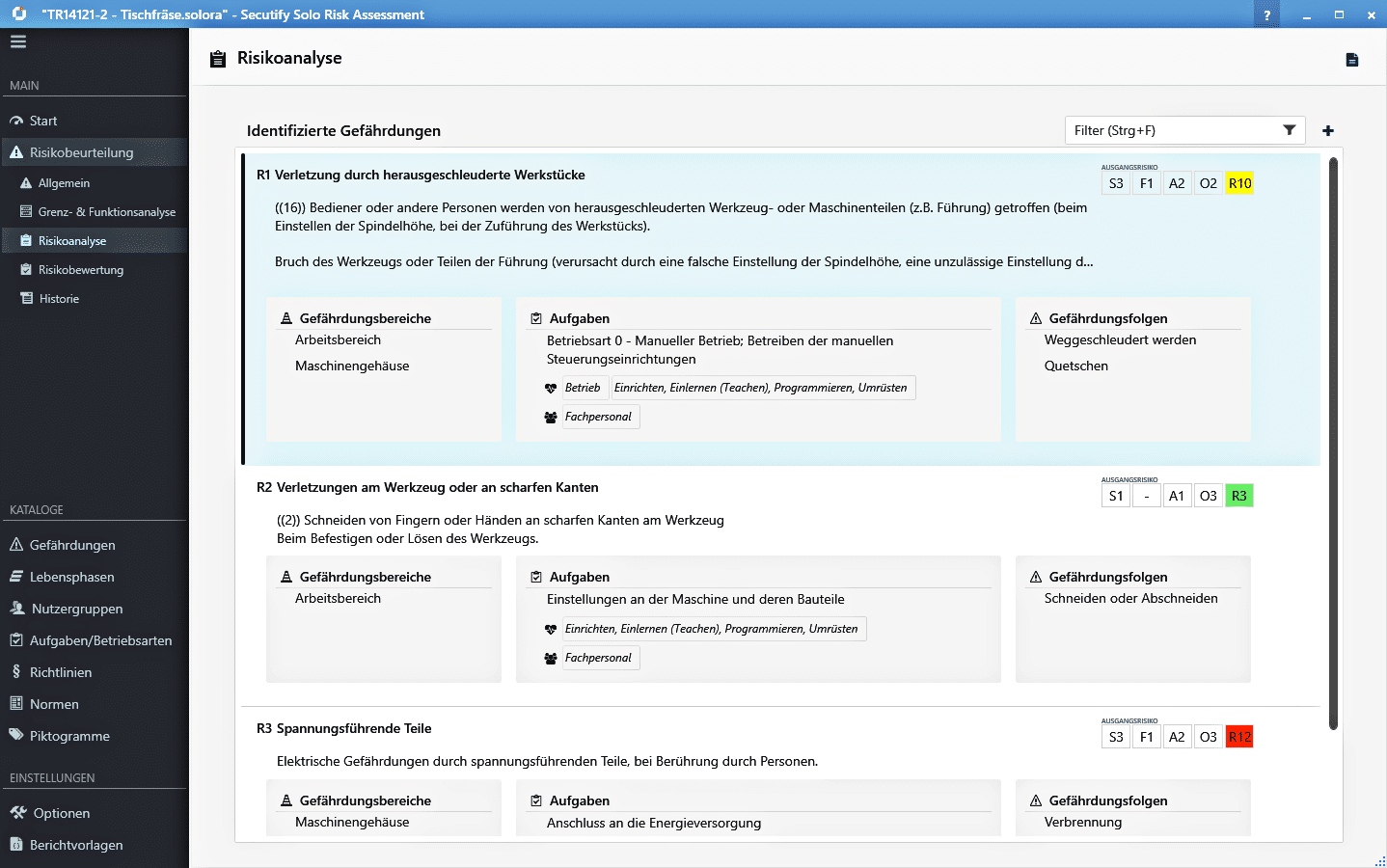
About us
What we do.
We provide small and medium-sized companies with access to modern technologies that support them in implementing the Machinery Directive and help them to be competitive with larger competitors.
Designing safe machinery
Secutify Solo Risk Assessment guides you step by step through the process of machine risk assessment. Design engineers and CE representatives use it to create your documentation easily, quickly and efficiently.
Risk assessment according to EN ISO 12100
Risk Assessment
1. defining the limits of the machine
2. identifying the hazards
3. perform risk estimation
4. assess risks
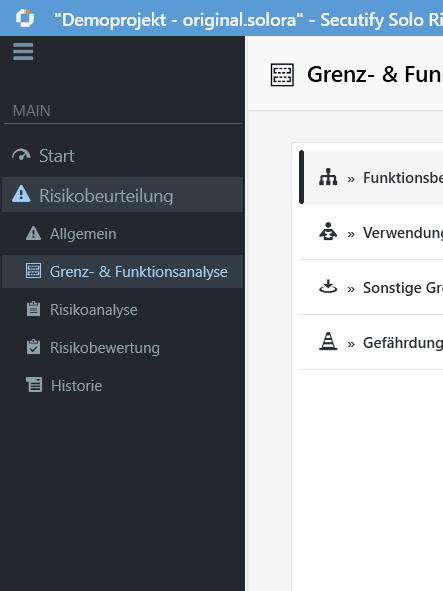
Determination of the limits of the machine
The preparation of the risk assessment begins with the definition of the limits of the machine, taking into account the operating modes and the phases of the machine’s life cycle. Predefined selection fields facilitate data input.
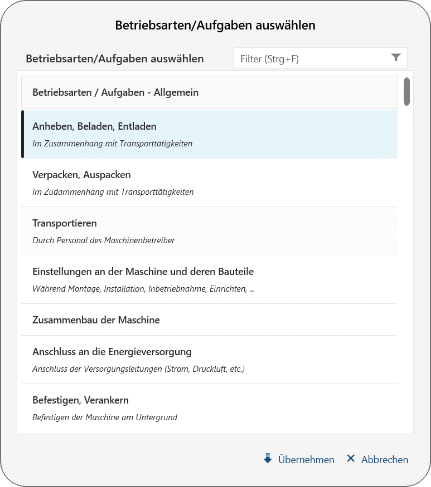
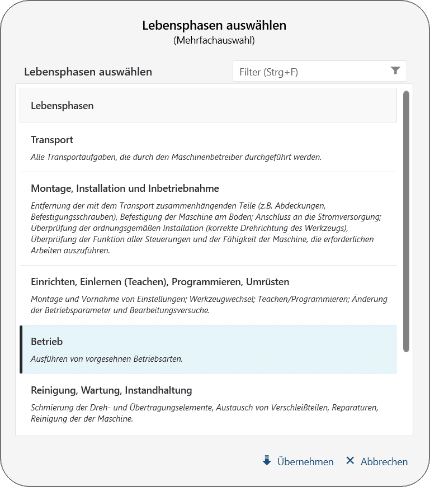
Marking hazard zones
With the Hazardous Zones feature, hazardous areas can be drawn directly into overview drawings and plans in Secutify. This makes them quick and easy to find.
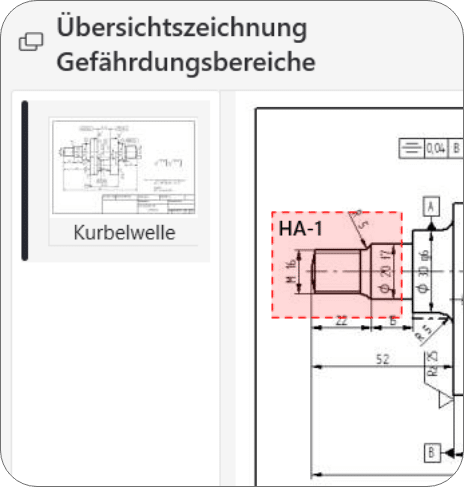
Identification of the hazards
Then, step by step, you identify possible hazards. In doing so, you use already recorded hazard zones and predefined Secutify catalogs. Among other things, Secutify catalogs contain standardized templates for tasks (operating modes), life phases, user groups and possible hazard consequences according to EN ISO 12100 (Appendix B).
The Secutify catalogs are available for all projects. This makes it even easier and faster for you to enter your documentation.
With the combined hazard identification, you can record recurring hazard patterns efficiently and clearly.
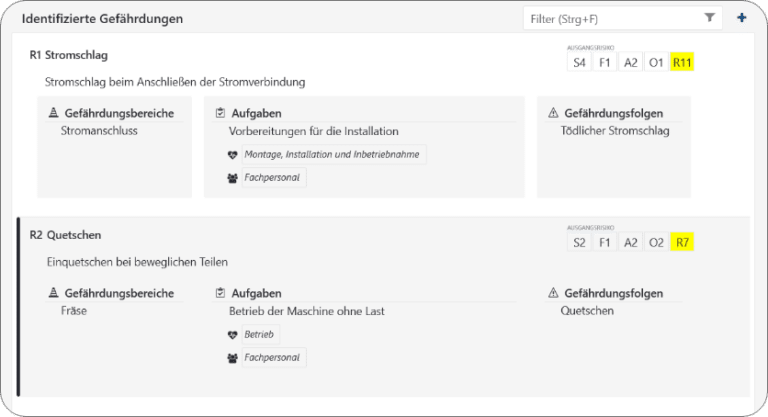
Secutify demo version test now!
Risk estimation
After identifying the hazards, a risk estimation must be performed for each hazard situation.
To determine the initial risk, use the integrated risk graph as a proven method for evaluating a hazard or risk, regardless of the machine type.
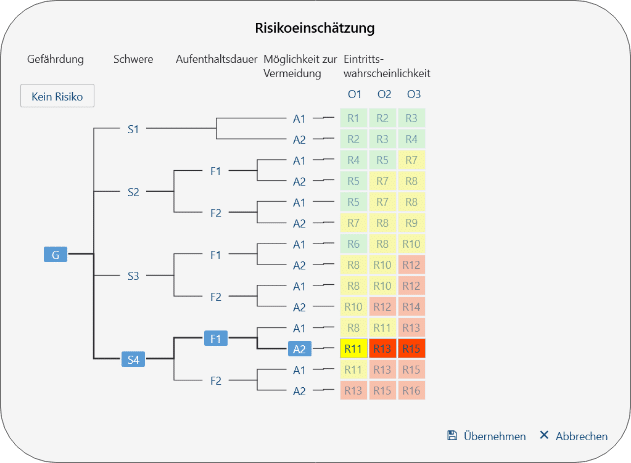
Risk Assessment
With the risk assessment, you finally document whether the targets for risk reduction have been achieved. A sufficient risk reduction is present if it at least meets the legal requirements, taking into account the state of the art.
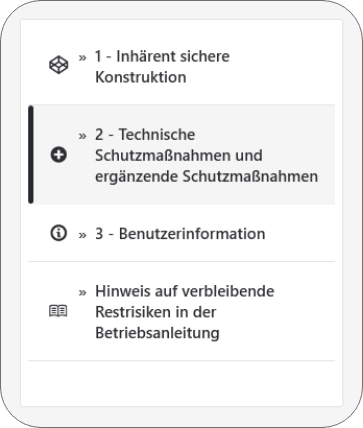
Applied documents
References to applied standards, directives, applied documents and pictograms facilitate documentation.
Use your existing standards for risk assessment. There is no need to purchase the standards or standards licenses for Secutify again.
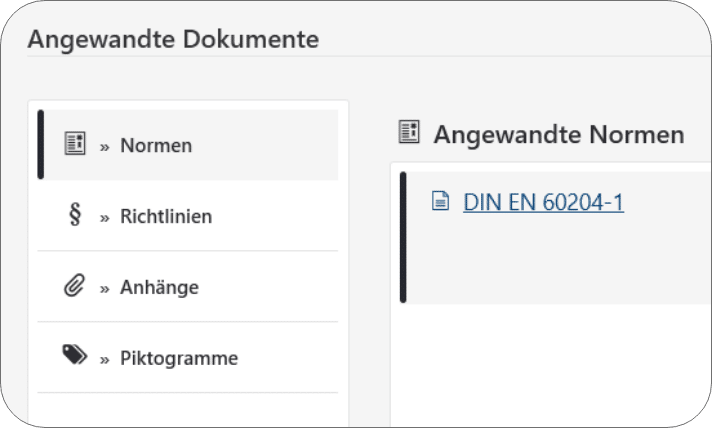
Documentation
The documentation according to EN ISO 12100 must show the method used and the results obtained. Reference should also be made to applied standards or other specifications used to select the protective measures. Secutify clearly guides you through this procedure and allows you to output the documentation as a report in PDF format.
